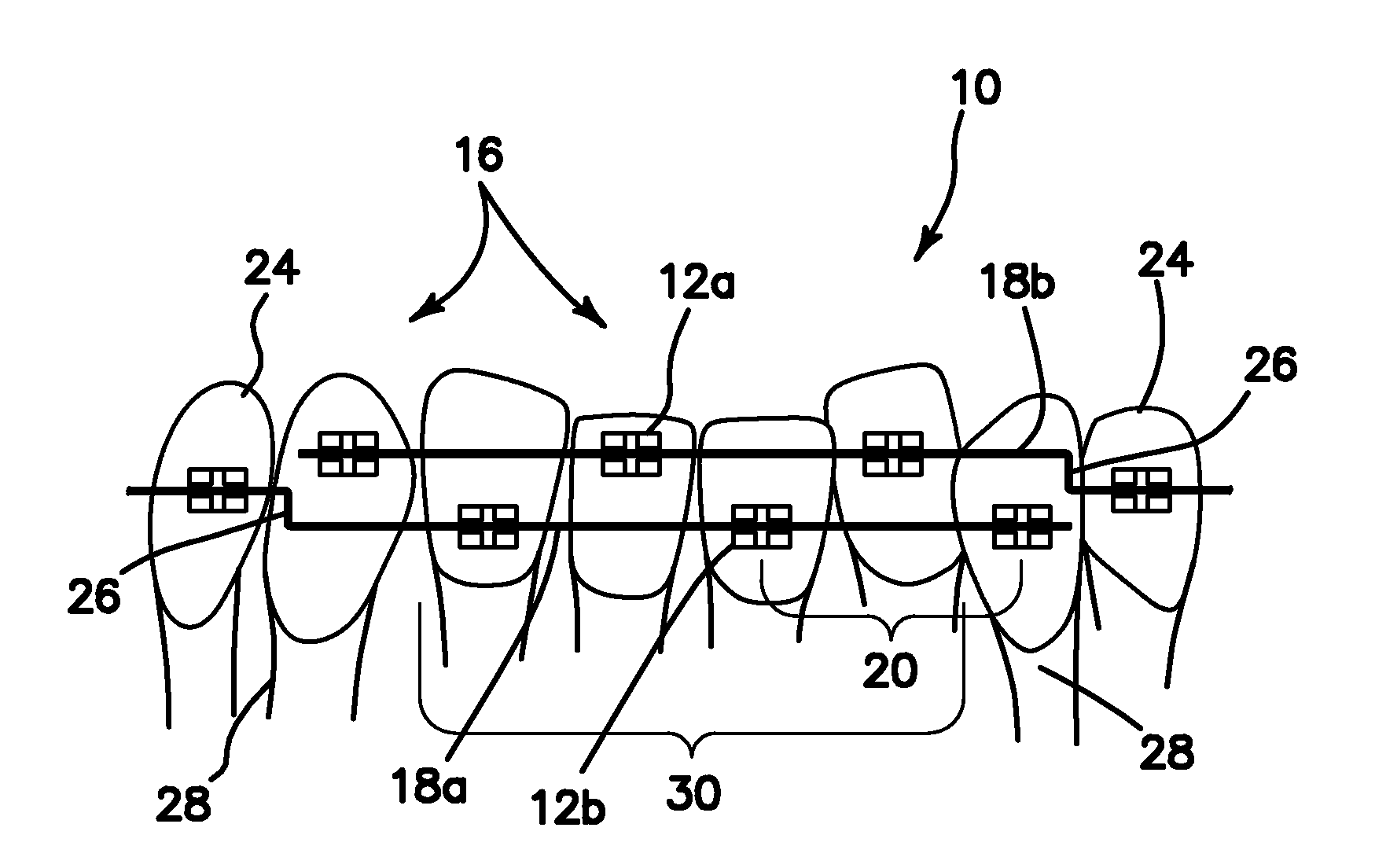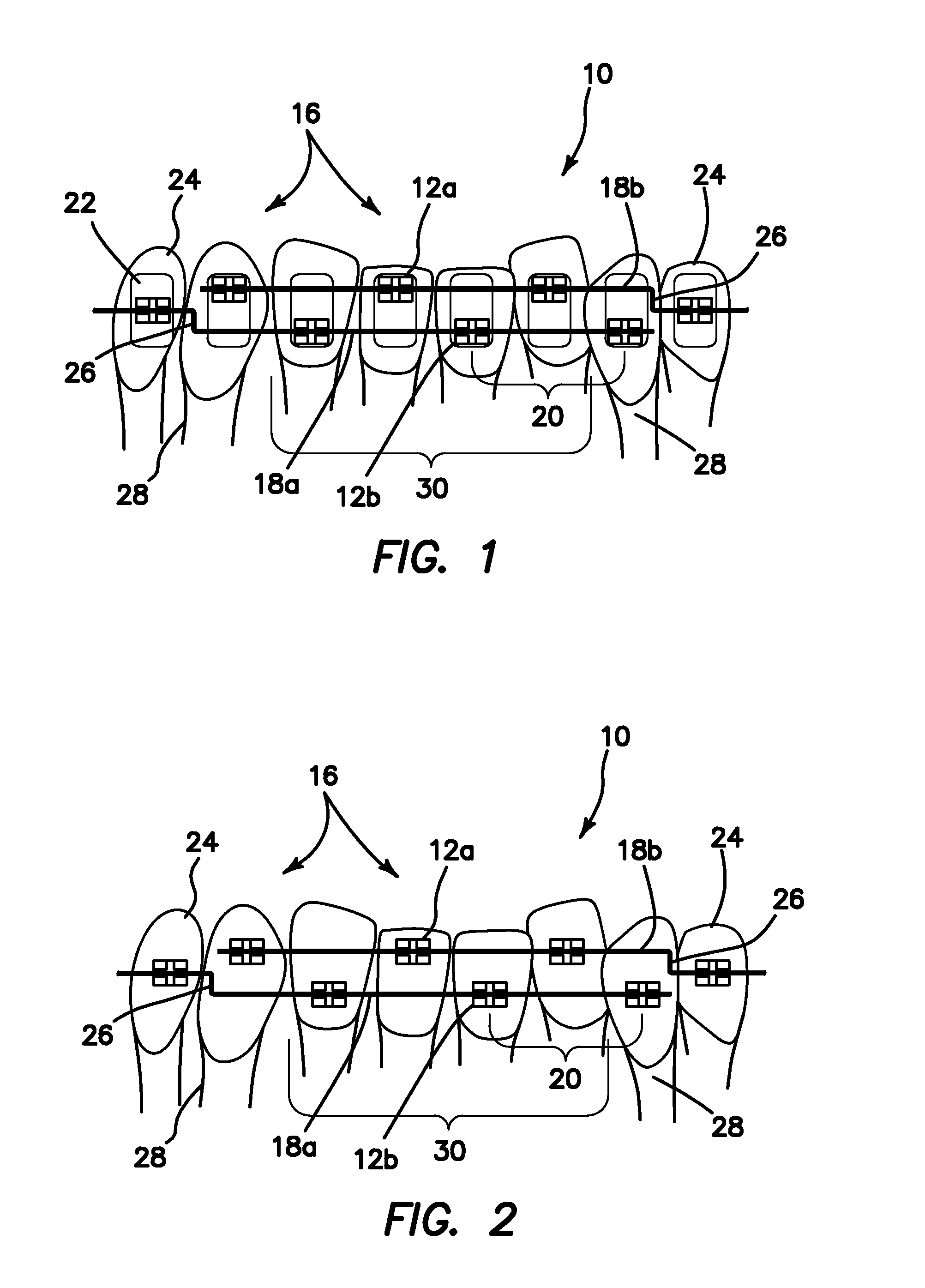High/low bracket placements on lingual surfaces
a technology of brackets and lingual surfaces, applied in the field of orthodontic brackets and wire systems, to achieve the effect of adding rigidity and shortening the span of teeth not connected
- Summary
- Abstract
- Description
- Claims
- Application Information
AI Technical Summary
Benefits of technology
Problems solved by technology
Method used
Image
Examples
Embodiment Construction
[0018]The illustrated embodiment is directed to a lingual or tongue side bracket system as shown in FIG. 1. However, it must be understood the spirit and scope of the invention also includes buccal or cheek-side bracket systems as well. For the lower anterior teeth, namely in the region from cuspid to cuspid which typically includes the four incisors 30 and the two cuspids 28, wire bending robots have a most difficult time bending wires, because the teeth are small and the brackets are close together, especially with crowded or rotated teeth. In such cases, the robotic grippers are typically not small or fine enough to efficiently or effectively operate. Such bending robots are well known to the art and one example is shown in “Robot and method for bending orthodontic archwires and other medical devices,” U.S. Pat. No. 7,076,980, incorporated herein by reference.
[0019]The illustrated embodiment provides alternating brackets 12a and 12b for this difficult region. High-low bracket pla...
PUM
 Login to View More
Login to View More Abstract
Description
Claims
Application Information
 Login to View More
Login to View More - R&D
- Intellectual Property
- Life Sciences
- Materials
- Tech Scout
- Unparalleled Data Quality
- Higher Quality Content
- 60% Fewer Hallucinations
Browse by: Latest US Patents, China's latest patents, Technical Efficacy Thesaurus, Application Domain, Technology Topic, Popular Technical Reports.
© 2025 PatSnap. All rights reserved.Legal|Privacy policy|Modern Slavery Act Transparency Statement|Sitemap|About US| Contact US: help@patsnap.com


